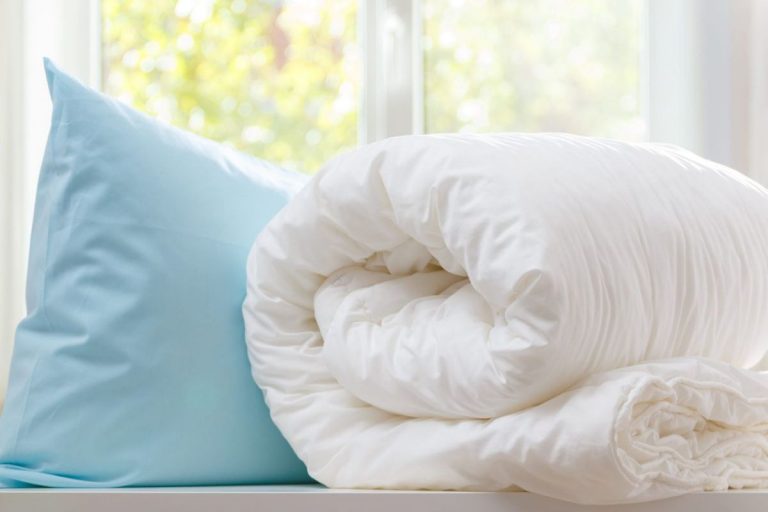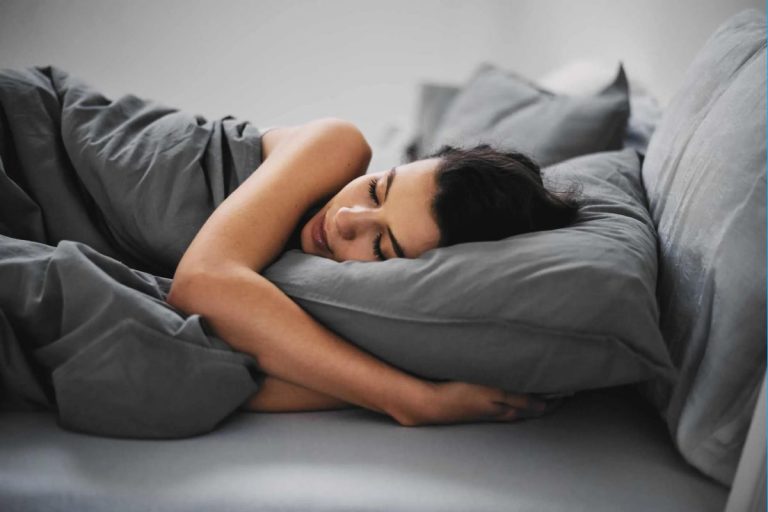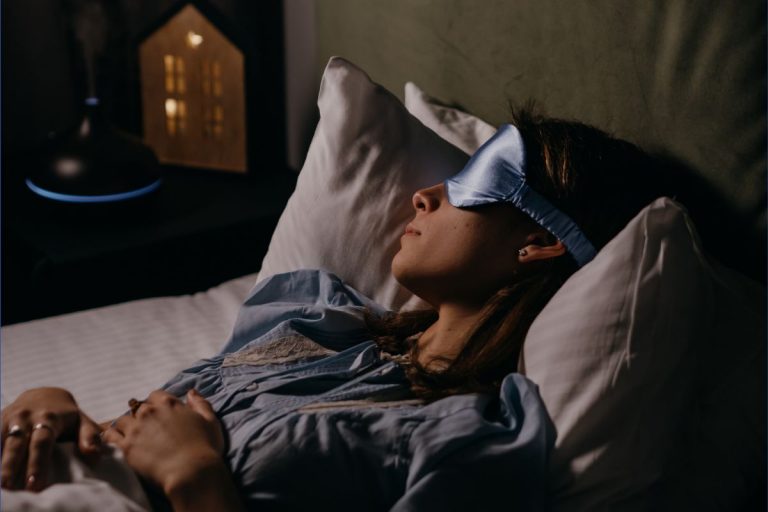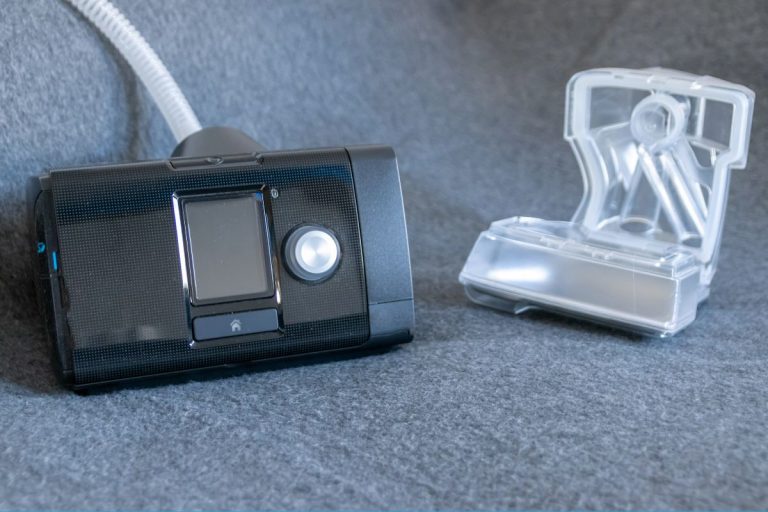Compression socks are designed to help improve blood flow, reduce swelling, and can even help relieve muscle fatigue. A compression sock will fit snug against your leg. When you apply pressure, the sock will compress. Some people may experience some discomfort when wearing compression socks, especially if they are new to this type of therapy.
Wearing the socks during sleep can help improve circulation and reduce swelling throughout your legs overnight while you rest. Doing so is not advised without consulting with a medical professional first, as sleeping in these types of garments may cause various issues.
In this article, we are going to discuss the pros and cons of wearing compression socks at night. Is it safe? Does it actually do anything? Many people find them uncomfortable, and trying to sleep while feeling uncomfortable is a challenge.
Pros and Cons of Compression Socks
Compression socks have a very specific use case. When blood circulation is being restricted, wearing compression socks can help improve circulation and reduce swelling.
Using a cheap pair of regular socks will not give you the same results as using true therapeutic grade compression socks that are designed for medical use. So, if you want to wear them at night, make sure they’re from a reputable source.
While these socks have many benefits, there are some cases where you should not wear them. Let’s see their pros and cons.
Pros
Compression socks help improve blood flow. They apply pressure to your legs, which increases circulation and reduces swelling. It’s like having an ongoing massage on your legs.
Here are the major advantages of keeping a compression sock on:
- Can help relieve muscle fatigue from working out or running long distances. This directly results from the improved blood circulation. Muscles need oxygen to recover and rebuild themselves. And the extra blood improves oxygen delivery to them.
- Reduces swelling, by increasing blood circulation and reducing the amount of fluid kept in your legs.
- Helps to prevent DVT or deep vein thrombosis, which is a medical condition where clotted blood forms in the veins.
- May help in reducing pain associated with chronic venous insufficiency.
- Are good for people who are on their feet all day long, like nurses, flight attendants, etc., because they provide relief from tired legs.
- Helps relieve stress and anxiety by improving blood flow to your brain.
Cons
Compression socks are not for everybody, as they have their downsides. Here’s what you should be careful about before using them:
- You may feel uncomfortable wearing them to sleep, especially if you are a side sleeper.
- They can affect your skin, especially in the area around where they create a “pinching” feeling or cause blisters and sores to form due to too much pressure applying to the skin.
- They have worsened conditions such as varicose veins and spider veins. Compression socks can increase blood pressure, which is not good for people who already have these conditions.
- There are several cases where you should never wear compression socks: pregnant women, diabetic patients with sores on their legs or feet, and severe varicose veins that cause too much pain when wearing the garment.
- They can be difficult to put on. If you have arthritis, this may pose a problem for you.
- Bending your leg enough to get the sock on may cause pain in your knee or thigh muscles, especially if they are already fatigued from previous activity.
- They can be an inconvenience when you are trying to change positions during the night, especially if your feet become tangled in them or they bunch up.
- They can make your legs feel too warm at night, which some people find uncomfortable.
- Wearing compression socks to bed may not be suitable for those with circulatory problems or other issues that affect their feet and ankles, such as diabetes, vascular disease, heart conditions, neuropathy, and more.
Editor’s note: Always consult a doctor on this issue. If they advise you against wearing compression socks in bed, then you should avoid doing it.
Should You Sleep with Compression Socks on?
No, you shouldn’t. Compression socks work when gravity is affecting your veins and you’re standing and moving. They don’t really do anything at night. You’re just exposing yourself to extra risks.
Here’s why you shouldn’t sleep with compression socks on.
Risk of Paresthesia
Paresthesia (tingling, numbness, or burning of the skin) – Skin irritation and rashes. This is especially true if you have allergies to lanolin or other additives in your sock material. If get a medical alert bracelet for people with wool sensitivity because of having severe dermatitis.
Increased Risk of DVT or Pulmonary Embolism
There is a risk of increasing the chances of DVT, or Pulmonary Embolism while wearing compression socks.
DVT stands for deep vein thrombosis and is a medical condition where blood clots form in the veins. It’s dangerous because it could lead to blood clots breaking off and traveling through your veins to the lungs, which is known as a pulmonary embolism.
This can be fatal and needs to be taken seriously. If you experience any symptoms such as pain, swelling, warmth in the leg/calf area, get evaluated by your doctor immediately.
They Block Blood Flow to the Feet
Compression socks put pressure on the veins in your feet, which can cut off blood flow to them.
This can cause pain or numbness in your toes and fingers. To prevent this from occurring it is important that you do not wear compression socks for more than 12 hours at a time.
When you wear these socks while standing, this isn’t an issue because gravity counteracts this pressure and still gets blood to your feet.
Risk of Infection
Another risk with compression socks is that they can be breeding ground for bacteria, fungus and yeast. This could lead to infection in your feet or legs, causing them to swell up severely. If you are prone to infections, wear cotton socks when wearing the garment.
Editor’s note: you can avoid these issues by properly cleaning your compression socks. Here’s a quick guide:
- Rinse them in cool water while wearing them to prevent shrinkage.
- Machine wash with cold water, gentle cycle.
- Tumble dry on low heat if you are not allergic to lanolin.
They Can Worsen Your Varicose Veins,
Varicose veins are dilated veins that have become enlarged because of the pressure they’re subjected to. Varicose veins are caused by poor circulation, aging, hormone changes during pregnancy or birth control pills, obesity, standing for long periods of time, chronic coughing or diarrhea, previous history of blood clotting disorders, and other factors.
The swelling can cause these veins to show through the skin (become visible) and lead to myriad health problems. These may include:
- Elevated risk of skin infections, such as cellulitis.
- Pain or a heavy feeling in the legs that usually gets worse and while standing for long hours.
- Worsening symptoms during pregnancy and immediately after giving birth (varicose veins can become prominent around the vaginal area).
- An aching or cramping pain in the legs.
- Burning, itching and redness of the skin around veins.
People who have varicose veins should avoid wearing compression socks because they can exacerbate their condition by increasing blood pressure to those swollen areas.
This happens when the compression sock isn’t worn properly. The pressure will be in the wrong areas, making the issue worse.
Do this if You absolutely Must Wear Compression Socks at Night
The thing with wearing these socks at night is that you’re keeping a garment on for hours when our skin should be able to breathe freely.
However, here is how you can minimize risk and enjoy a good night’s sleep in your compression sock:
- Try applying lotion or oil around where it pinches so that skin won’t be irritated by wearing them.
- Keep them clean and wash according to the manufacturer’s cleaning instructions.
- Change your socks every few days if possible. If you sweat excessively, change your socks after each day of wearing them or twice a day at least. This will help prevent skin breakdown from over-exposure to moisture for too long.
- Do not wear the same pair for over one day in a row, even if they are clean and free of moisture or debris that could cause skin irritation. Remember to wash them after every use.
- Use mild soap and water or non-irritating detergent (like Woolite) when washing your compression socks.
- Air-dry the garment on a flat surface, out of direct sunlight, away from any heat source such as an electric heater. Since they are made of nylon and spandex, they will shrink in high heat.
- Do not machine wash them with other clothing items because the garments could get tangled up together and cause damage to the compression socks’ elastic materials.
- Ensure that you follow all directions when washing your garment so as not to ruin it. If you cannot find any specific instructions on how to wash it, contact your supplier for more information.
Editor’s Note: Compression socks are not meant to be worn during the day or night. You should only wear while you’re standing up and doing activities that will benefit from their therapeutic benefits, such as longer-term travel, flying long distances in a seated position, or even standing for long periods of time.
Picking the Right Compression Socks for You
Self-testing is a great way to find out which compression socks will help your legs and how much pressure they should be set at so that the blood circulation isn’t partially cut off, but good enough for an improvement in leg discomfort.
It’s also important to try different models of compression stockings because some people prefer tight stockings while others like them to be looser.
The best way to get compression socks is by contacting a doctor or nurse who has used them before for their patients. They will know the exact brand and model of knee-high socks that are right for you, so don’t waste time trying out random brands because they won’t help you much.
Conclusions
Sleeping with compression socks on is useless in the vast majority of cases. In fact, it’s potentially harmful. We pointed out some ways you can reduce these risks, but the best thing would sleep without.
Compression socks are extremely helpful for people who stand up all day and athletes. They help our legs by improving blood circulation.
But they require gravity to work. But gravity doesn’t affect our leg veins when they are lying horizontally. So, it makes little sense to wear them at night. The improvements would be marginal.
However, each person is unique, and you might be one of those people who absolutely must wear compression socks at night. If this is the case, then you should consult your doctor and ask them for ways to lessen the risks.
The best way to ensure that you’re not putting yourself or others at risk of infection is by wearing clean cotton socks over them and changing every day during waking hours (or even twice a day). Also, make sure they are completely dry before you wear them again.
Also Read:





